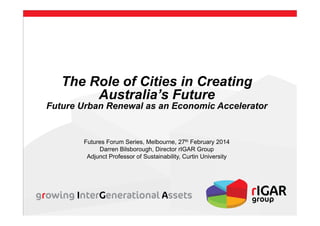The document summarizes a presentation on the role of cities in creating Australia's future and challenges they face. It discusses two main challenges - environmental issues from climate change and resource constraints, and maintaining population health. Other topics covered include urban renewal as an economic accelerator, megatrends shaping the future, importance of cities to the economy, themes for building resilient cities, and the need for innovative planning approaches to address these issues.






















































































